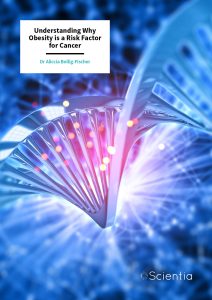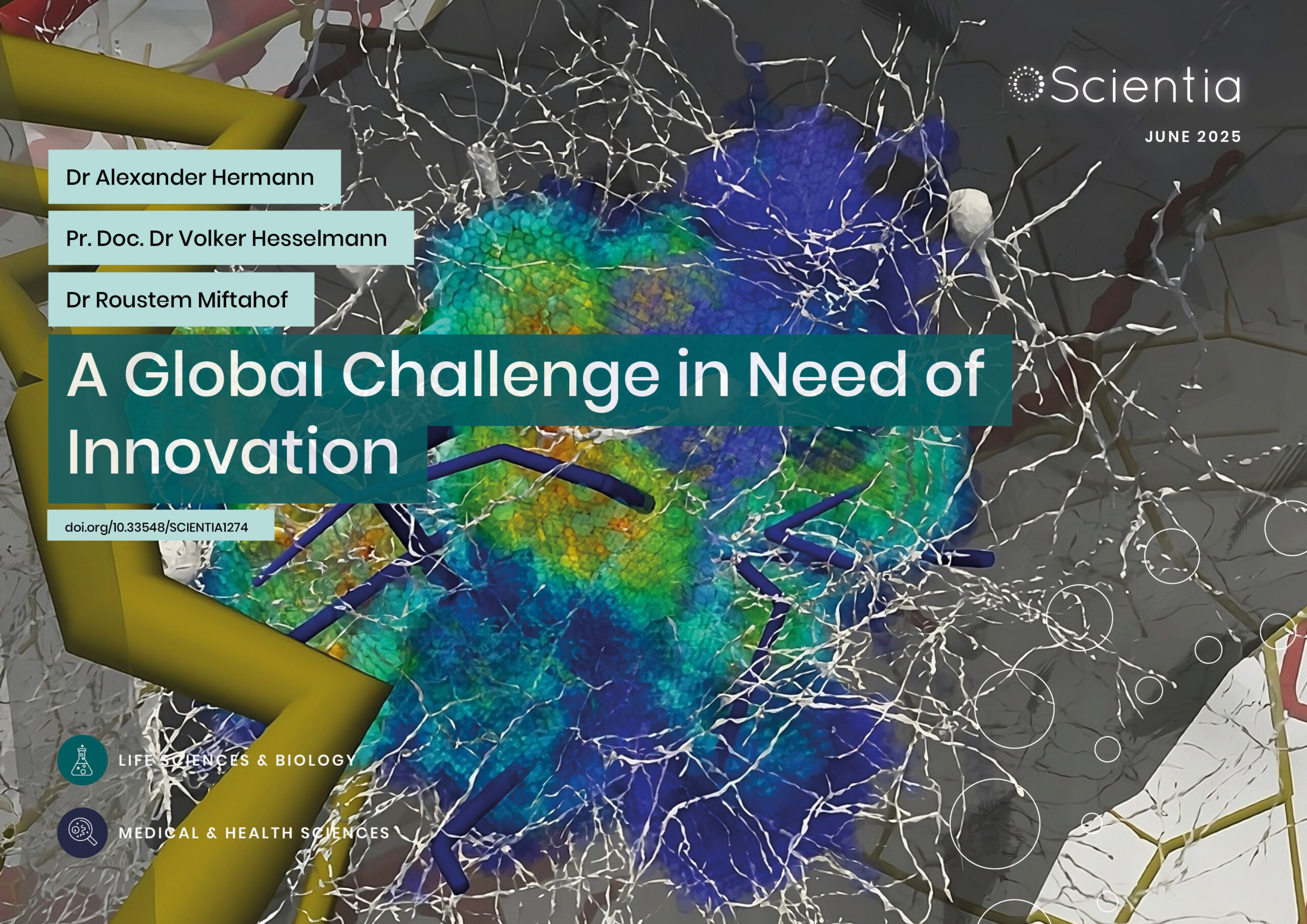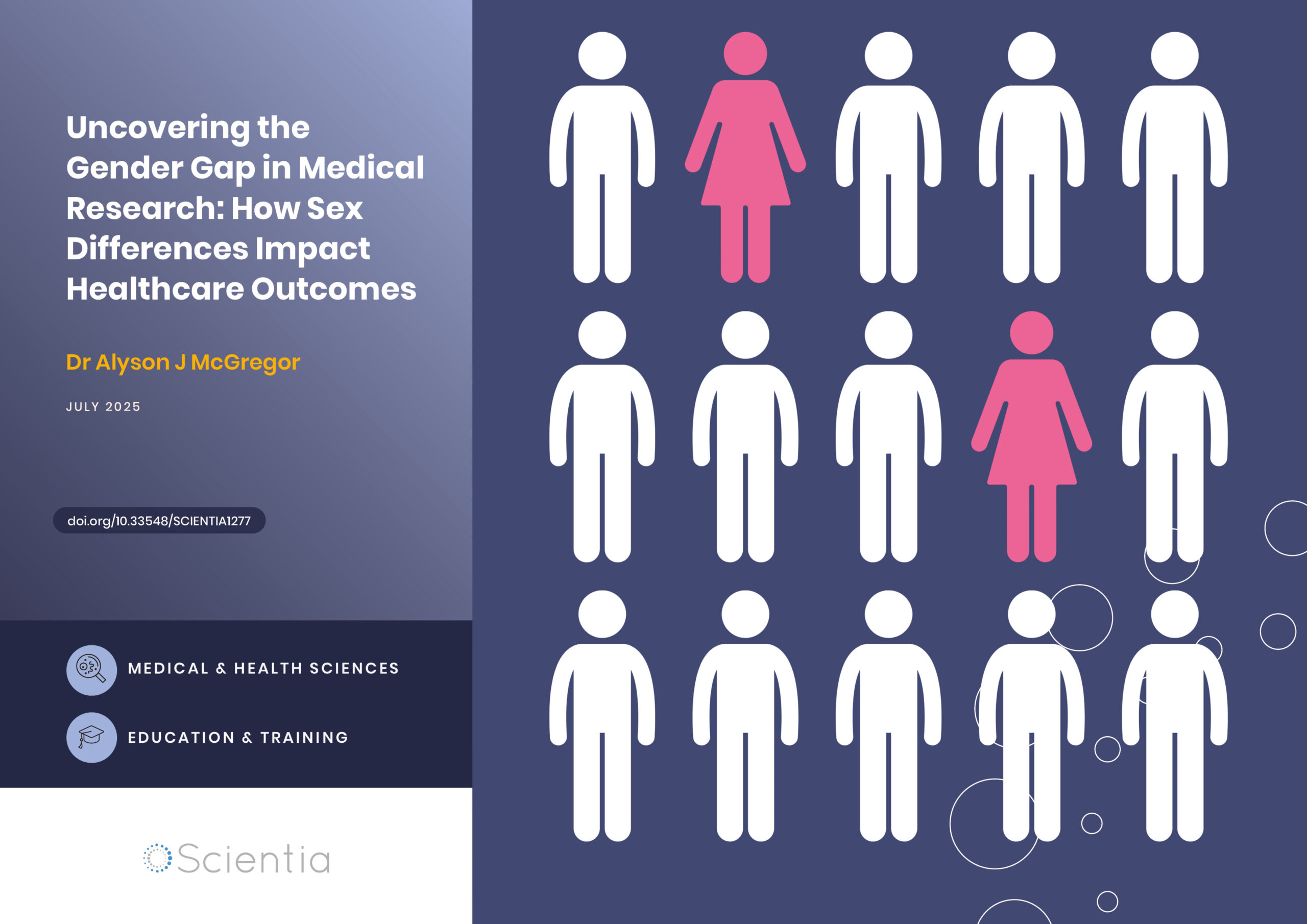Dr Aliccia Bollig-Fischer – Understanding Why Obesity is a Risk Factor for Cancer
Cancer can be caused by genetic mutations or epigenetic alterations, which are changes to the way DNA is processed, rather than to the DNA itself. These changes can be brought about by obesity, and more specifically, oxidative stress and consequent reactive oxygen species. However, the molecular mechanisms by which this occurs are not well understood. Dr Aliccia Bollig-Fischer from Wayne State University School of Medicine in Michigan is studying these processes and paving the way for the development of novel cancer therapeutics.
DNA Methylation and Cancer
Many people will be familiar with the concept that cancer is caused by DNA mutations. When DNA is damaged and its structure is altered, the process of protein synthesis via transcription and translation is altered. This can either mean that the genes are expressed and the resultant proteins are faulty, or that the wrong amount of protein is produced. Through complex molecular mechanisms, the eventual result can be a tumour.
However, a lesser-known aspect of cancer formation is the field of epigenetics. This is the process by which the way a cell reads the DNA and a gene is expressed is altered, rather than the DNA itself. Whereas DNA mutation is permanent, an epigenetic modification can be reversed. This is a vital part of normal cell function because it helps to control healthy gene expression.
One important example of epigenetics is DNA methylation – the addition of a methyl group onto a base of the DNA. Often, this silences (or represses) the gene, meaning that it is not expressed at all or is expressed at a lower level and less protein is produced from it. This usually occurs on CpG islands, which are areas of DNA where there is a high concentration of cytosine nucleotides followed by guanine nucleotides.
CpG islands are usually found just before the beginning of a gene, at the transcription start site. Therefore, when a CpG island is methylated, the adjacent gene is silenced. Although this is a normal part of protein production, when it goes wrong, it can have serious consequences. If a tumour suppressor gene is silenced due to methylation, or a CpG island is altered and consequently, oncogenes are activated, this can lead to cancer.
Despite extensive volumes of existing research into cancer epigenetics, there is still much more work to be done. Dr Aliccia Bollig-Fischer from Wayne State University School of Medicine in Detroit, Michigan, carries out dedicated research into the molecular and genetic reasons for how cancer develops. In addition to clarifying these underlying mechanisms, her work could help to give insight into novel therapies for cancer.
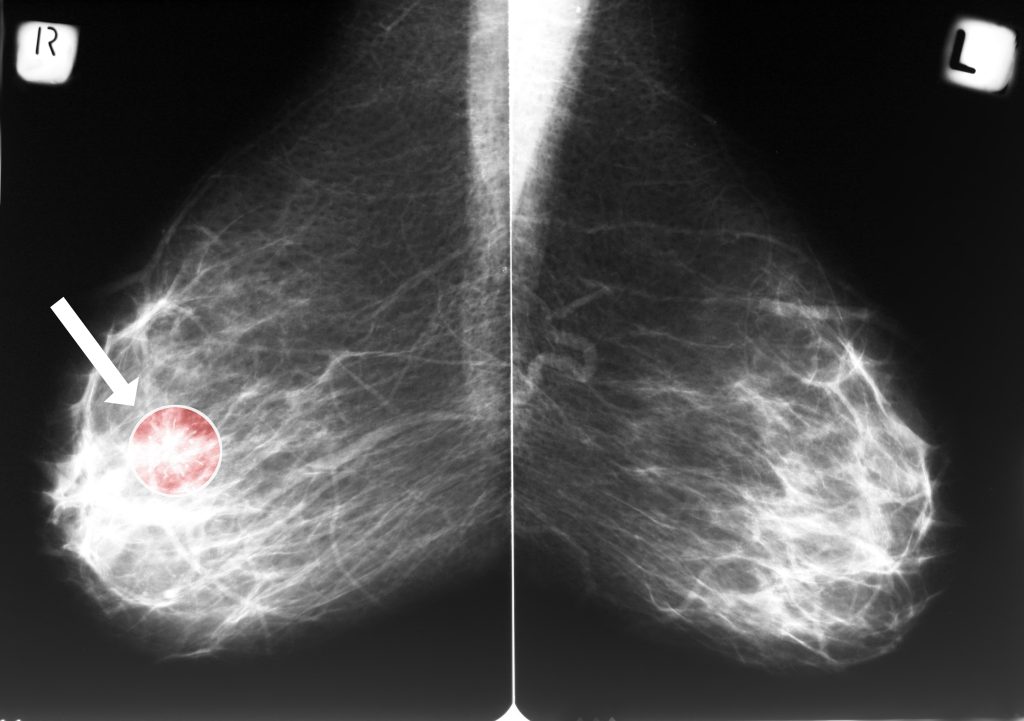
Triple Negative Breast Cancer
One specific cancer that Dr Bollig-Fischer is interested in is called triple-negative breast cancer, a type of breast cancer that presents in around 15–20% of new patients. Characterised by lack of expression of the genes for HER2, oestrogen or progesterone receptors, triple-negative breast cancer cannot be treated by standard hormone therapies or anti-HER2 therapies. Specific subtypes of this cancer can, unfortunately, be extremely difficult to treat.
For many types of cancer (including breast cancer), a methylation event known as 5mC is well-researched. This epigenetic modification occurs when a methyl group is added to a cytosine base on its fifth carbon atom. The slight alteration of the addition of a hydroxy group to the methyl group creates a different molecule called 5hmC. Once thought to be an unimportant oxidation event, new research and improved techniques have shown it to be more interesting. Unlike most methylation occurrences like 5mC, 5hmC is associated with increased gene expression. Therefore, Dr Bollig-Fischer made this the focus of one of her studies.
She and her team scanned the available literature on 5hmC and hypothesised that it regulates the expression of genes that promote cancer stem cell-like cells in triple-negative breast cancer. Cancer stem-like cells are self-renewing cells that drive tumour progression and also lead to metastasis, the spreading of cancer to additional areas of the body. They believed this to be mediated by redox (reduction-oxidation) reactions involving reactive oxygen species (ROS).
They set out to find the genes that are the target for these processes, looking for those that are regulated by ROS and therefore, sensitive to antioxidants and when 5hmC occurs, associated with the gene expression changes in triple-negative breast cancer. By developing a novel approach for their experiments, Dr Bollig-Fischer and her colleagues discovered a set of genes whereby the 5hmC level was coordinated with the relevant gene expression changes. Critically, these genes could potentially be regulated via a selective or targetted antioxidant treatment.

The Role of MBD2-v2 in Breast Cancer
A major risk factor for cancer is obesity and once cancer has formed, it also often leads to poor outcomes. The theory behind this is that the adipose (fat) tissue that builds up results in an immune response in the form of local and system-wide chronic inflammation. One consequence of this is an increase in oxidative stress and ROS which can incite breast cancer, including triple-negative breast cancer. However, the exact underlying mechanisms of this progression are unclear, and Dr Bollig-Fischer wanted to elucidate the issue.
Previous research with her team had found an important epigenetic reader, which is a protein that is vital for the maintenance and replication of cancer stem-like cells in triple-negative breast cancer. It has the rather long name of methyl-CpG-binding domain protein 2, variant 2 (or MBD2_v2 for short). Because of its role in cancer stem-like cell survival, Dr Bollig-Fischer believed it to be a key component in triple-negative breast cancer incidence and recurrence.
She hypothesised that obesity fuels an increase in MBD2_v2 expression which promotes cells to turn into cancer stem-like cells. Tests using obese mice and lean control mice with triple-negative breast cancer tumours confirmed her theory. The tumours of the obese mice had much higher levels of MBD2_v2 in addition to another protein called serine- and arginine-rich splicing factor 2 (SRSF2). Tumours also appeared more frequently in obese mice.
When the genes for SRSF2 were knocked down (removed) from the mice, they could no longer make the protein. The side-effect was that MBD2_v2 expression also decreased and in turn, cancer stem-like cells also diminished within the tumours. Dr Bollig-Fischer says this provides evidence for a new mechanism of cancer progression that is initiated by obesity. A majority of triple-negative breast cancer patients are overweight or obese, which emphasises the need to understand what lifestyle changes will help these patients in addition to what pharmacological interventions could be useful.

Further Proteins Involved in Breast Cancer
Delving further into triple-negative breast cancer, Dr Bollig-Fischer conducted another study linking 5hmC with obesity. The epigenetic event of 5hmC is brought about by an enzyme called tet methylcytosine dioxygenase (TET1). Although it is an important enzyme to maintain embryonic stem cells, it is not well understood how and why it can support cancer stem-like cells. This has led to extensive research in this specific area from Dr Bollig-Fischer and her team.
They have found that hydrogen peroxide, an ROS, regulates the SRSF2 needed for MBD2_v2 activity. This supports the idea that obesity leads to cancer due to inflammation, an increase in ROS and then higher SRSF2 expression. Additionally, another protein of interest called TAR DNA-binding protein was put into the mix after investigations. TET1 upregulates TAR-binding protein via 5hmC and therefore, SRSF2 is upregulated to promote cancer stem-like cells.
Furthermore, in a brand new discovery, they reported that dysregulation within triple-negative breast cancer cells allows hydrogen peroxide to form signals that increase the levels of TET1. The team found this is more severe in obese patients, which further clarifies why obesity is a risk factor for this type of cancer. As with the previous research, this new understanding could be utilised to advance prevention and treatment strategies for triple-negative breast cancer.
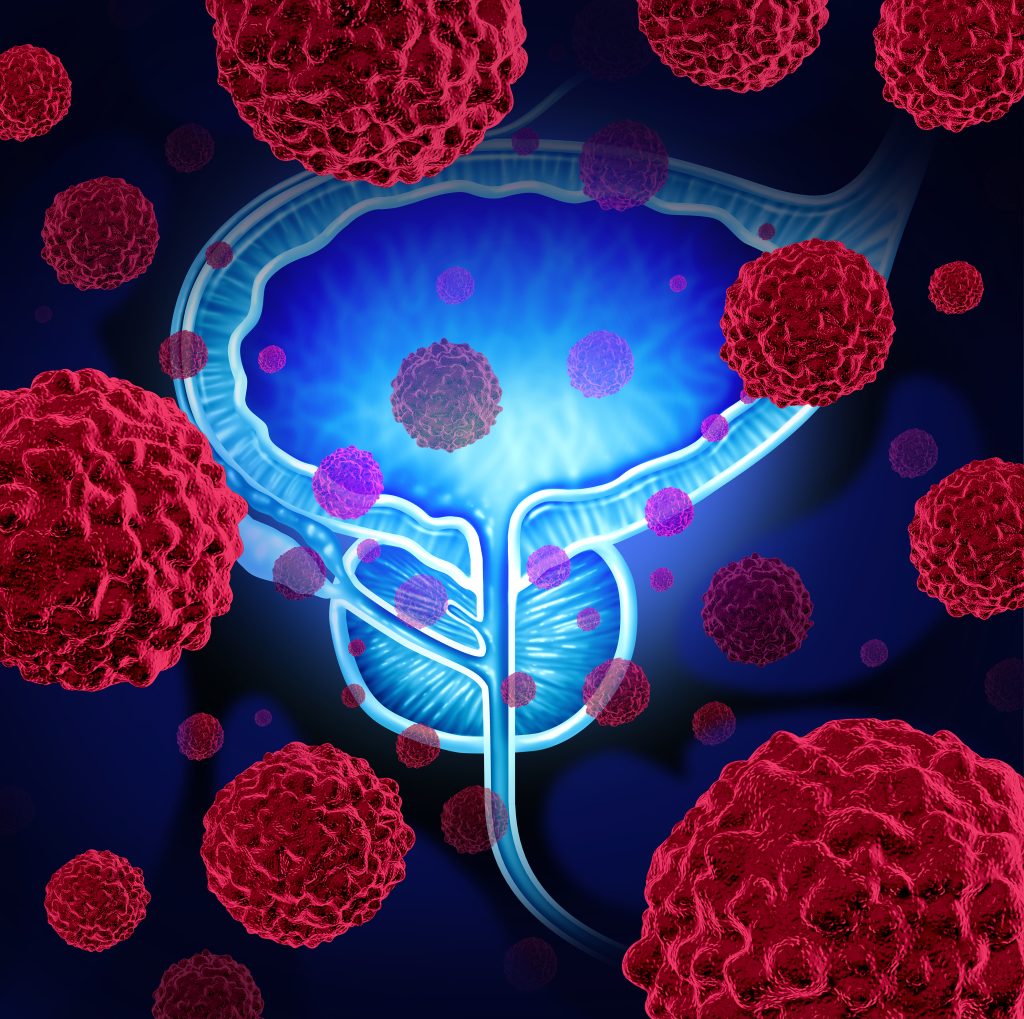
Different Risks of Prostate Cancer
In further studies, Dr Bollig-Fischer shifted her focus to prostate cancer. African American men are much more likely to be diagnosed with the disease compared to European American men, and they are also at higher risk of dying from it. She and her team used tissue samples from prostate cancer patients for their research and they made some interesting discoveries.
In the African American patients, the tissue adjacent to their tumours over-expressed a pro-inflammatory signalling molecule called interleukin-6 (IL-6) in comparison to the European American patients. Even though IL-6 is an immune molecule with wide-reaching roles, the team found that it inhibited the expression of the tumour suppressor, p53. The additional IL-6 also promoted cancer cells to self-renew and was associated with prostate cancer cells becoming stem-like.
As with the breast cancers she studied, these cancer stem-like cells were encouraged by MBD2_v2 whose expression had been elevated by the excess IL-6. This continually expanding knowledge of the mechanisms behind cancer incidence and recurrence will help Dr Bollig-Fischer and many other scientists to develop novel, targeted treatments. Hopefully, this will result in more positive outcomes for patients, regardless of gender or ethnicity.
SHARE
DOWNLOAD E-BOOK
LISTEN TO THE AUDIO
REFERENCE
https://doi.org/10.33548/SCIENTIA780
MEET THE RESEARCHER

Dr Aliccia Bollig-Fischer
Department of Oncology
Wayne State University School of Medicine
Detroit, MI
USA
Dr Aliccia Bollig-Fischer received BScs in Biology and Chemistry from St. Cloud State University in Minnesota. She went on to achieve her PhD in Human Physiology at Michigan State University and then completed postgraduate training at the Karmanos Cancer Institute and Wayne State University in Michigan. Currently, Dr Bollig-Fischer is an Assistant Professor in the Department of Oncology at Wayne State University. She has received multiple honours and awards for her research, which is centred around understanding lifestyle factors and the molecular mechanisms that lead to cancer.
CONTACT
W: https://cancerbiologyprogram.med.wayne.edu/profile/au6242
FUNDING
Qatar National Research Fund National Priorities Research Program
Barbara Ann Karmanos Cancer Institute
Michigan Fund For Cancer Research
U.S. Army Medical Research & Materiel Command Breast Cancer Research Program
FURTHER READING
B Bao, A Teslow, C Mitrea, et al., Role of TET1 and 5hmC in an Obesity-Linked Pathway Driving Cancer Stem Cells in Triple-Negative Breast Cancer, Molecular Cancer Research, 2020, 18(12), 1803–1814.
EA Teslow, C Mitrea, B Bao, et al., Obesity-induced MBD2_v2 expression promotes tumor-initiating triple-negative breast cancer stem cells, Molecular oncology, 2019, 13(4), 894–908.
C Mitrea, P Wijesinghe, G Dyson, et al., Integrating 5hmC and gene expression data to infer regulatory mechanisms, Bioinformatics, 2018, 34(9), 1441–1447.
EA Teslow, B Bao, G Dyson, et al., Exogenous IL-6 induces mRNA splice variant MBD2_v2 to promote stemness in TP53 wild-type, African American PCa cells, Molecular Oncology, 2018, 12(7), 1138–1152.

REPUBLISH OUR ARTICLES
We encourage all formats of sharing and republishing of our articles. Whether you want to host on your website, publication or blog, we welcome this. Find out more
Creative Commons Licence (CC BY 4.0)
This work is licensed under a Creative Commons Attribution 4.0 International License. 
What does this mean?
Share: You can copy and redistribute the material in any medium or format
Adapt: You can change, and build upon the material for any purpose, even commercially.
Credit: You must give appropriate credit, provide a link to the license, and indicate if changes were made.
SUBSCRIBE NOW
Follow Us
MORE ARTICLES YOU MAY LIKE
Stroke: A Global Challenge in Need of Innovation
Stroke is the third leading cause of both death and disability worldwide, but unfortunately, current diagnostic tools are unsatisfactory. Dr Roustem Miftahof and Dr Alexander Hermann at Advanced Biosimulation Technologies LLC, USA, are overcoming the limitations of existing diagnostic tools with the development of the Neuro-Glia-Vascular Unit Engine. This transformative tool for clinicians and biomedical researchers provides patient-specific health insights with the potential to improve care not only in stroke but across a range of neurological disorders.
Prof Doron Lancet | Reproducing lipid micelles permit early Darwinian evolution
The origin of life has puzzled science and philosophy for thousands of years. While the prevailing scientific narrative is of an ‘RNA world’ or ‘polymers first’ approach, Prof Doron Lancet’s group of the Weizmann Institute of Science in Rehovot, Israel, present an alternative, describing a ‘lipid world’ scenario as a plausible origin for life, in which lipid micelles (simpler structures than cell-like vesicles) could have been nanoscopic protocell precursors. Core to the theory is that these micelles could exhibit catalysis and compositional self-reproduction, passing information through the mixture of their lipid components rather than through a genetic sequence.
Dr Alyson J McGregor | Uncovering the Gender Gap in Medical Research: How Sex Differences Impact Healthcare Outcomes
Medical research has historically focused predominantly on male subjects, leading to dangerous gaps in our understanding of how diseases and treatments affect women. Dr Alyson McGregor from University of South Carolina School of Medicine Greenville has devoted her career to addressing this critical issue, highlighting how biological sex differences impact health outcomes. Her work demonstrates that ignoring these differences can have life-threatening consequences and advocates for more inclusive research practices to ensure safe and effective healthcare for everyone.
How Food Environments Shape Our Eating Habits
How we eat dramatically impacts our health, yet millions of Americans live in ‘food deserts’ – areas with limited access to fresh, nutritious food. Recent research reveals that solving this crisis requires looking beyond just physical access to food to understand how our entire community environment shapes our dietary choices. Through a series of pioneering studies, Dr Terrence Thomas and colleagues at North Carolina A&T State University have been investigating how different aspects of our food environment influence what we put on our plates. Their findings suggest that creating lasting change requires reimagining how communities engage with food at every level.

